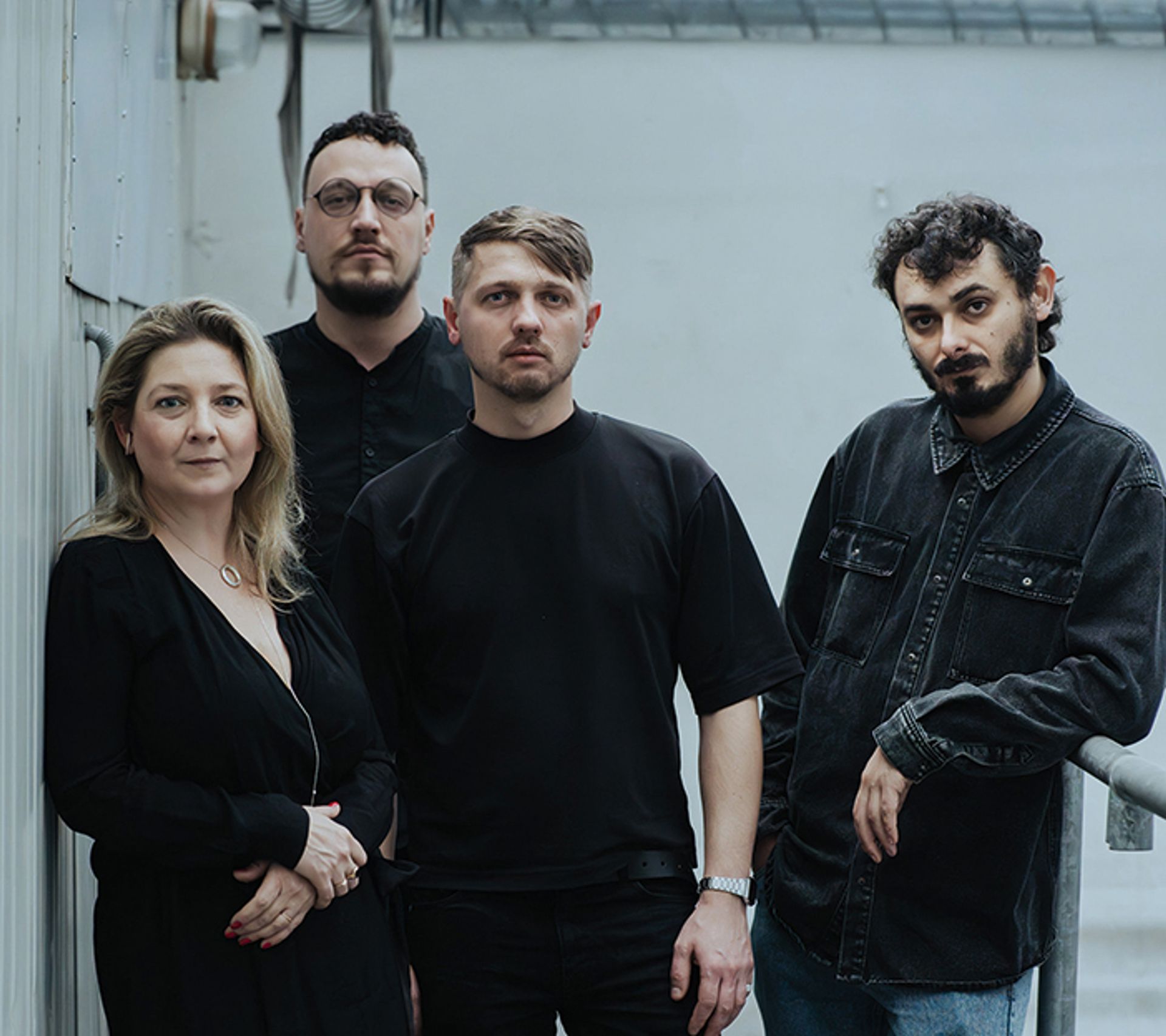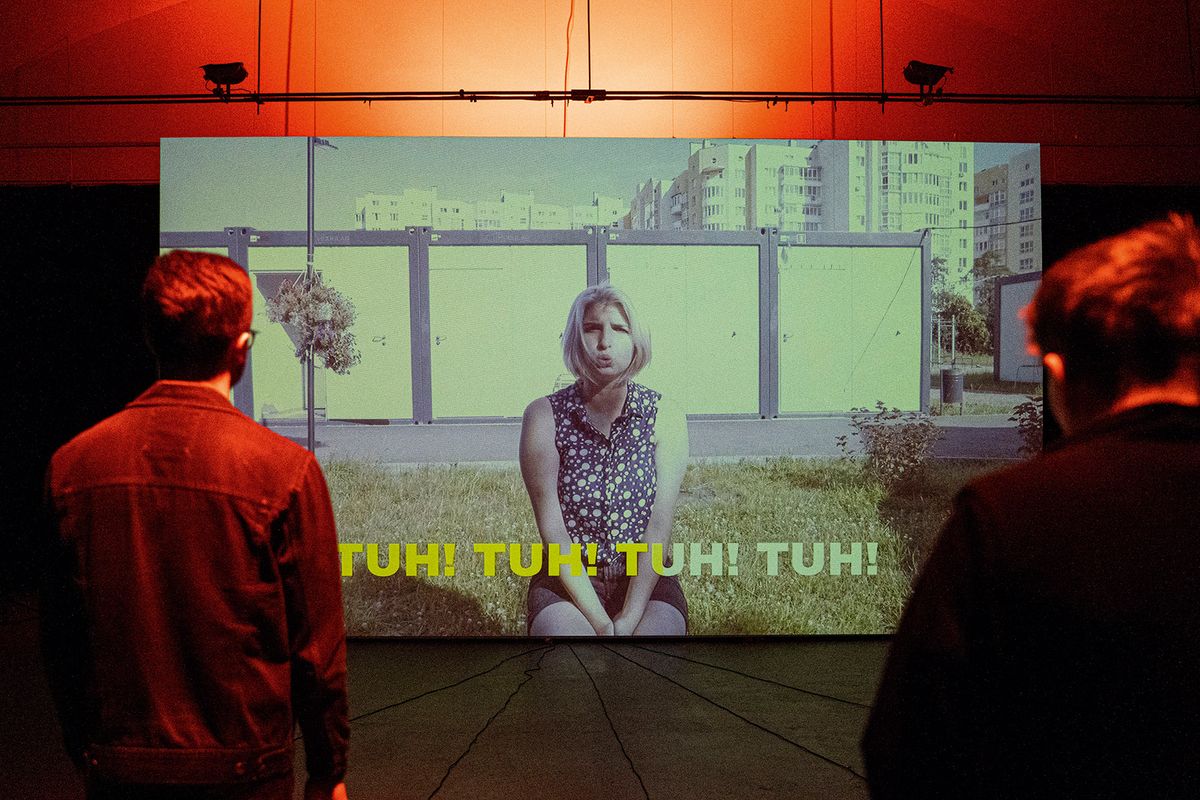Situated on the outer edge of the Giardini, the Polish pavilion dates back to 1932, when the inter-war Second Polish Republic was nearing its fateful end. Seven years later, the Nazi invasion ushered in a period that would prove the most destructive in Polish history.
Were it not for a change of government at the end of last year, the Polish pavilion would this year be staging an exhibition by the painter Ignacy Czwartos that looked back “on the tragic history of the 20th century” and Poland’s position between “the two bloody totalitarianisms” of Nazi Germany and Soviet Russia.

Curator Marta Czyż with Open Group members Yuriy Biley, Pavlo Kovach and Anton Varga Piotr Czyż
In October 2023, under the auspices of Poland’s previous right-wing government, Czwartos was selected to represent the country by a jury headed by Janusz Janowski, the director of Warsaw’s Zachęta National Gallery of Art, which acts as the custodian of the Polish pavilion. The arrival of Donald Tusk’s centrist coalition government, however, saw things quickly change. First, Janowski was removed from his post at Zachęta, with his dismissal quickly followed by the news that Czwartos’s project had been deselected, to be replaced by the reserve project, a video-based installation by the Open Group collective.
Beyond Poland’s borders
While Czwartos has said his project had relevance to both “the past and today”, including the war in Ukraine, many in Poland’s art community were vehemently opposed to his selection, arguing his work was overly concerned with portraying Poland as a historical victim of external forces. Instead, Open Group has shifted the focus beyond Poland’s borders, exploring the Ukrainian experience of war, in an exhibition the groups says, “unites us as neighbours”.
Organised by the Polish art historian and curator Marta Czyż, the new Venice exhibition, Repeat After Me II, expands on work originally completed in 2022 by Open Group’s three permanent members, Yuriy Biley, Pavlo Kovach and Anton Varga, all of whom were born in Ukraine. Presented as “a collective portrait of witnesses of the ongoing war in Ukraine”, the installation features filmed recordings of “civilian refugees” giving voice to the “sounds of weapons” they remember from the war. Adopting a “karaoke format”, the audience is invited to repeat the sounds they hear, only instead of “hit songs”, they are the sounds of “shots, missiles… and explosions”.
Inspired by brochures issued by Ukraine’s Ministry of Culture and Information Policy, advising citizens how to respond when under attack from different types of weapon, the artists say they envisage the space inside the pavilion “as a meeting place where, in a relaxed atmosphere, viewers can learn about the experience of witnessing war and perhaps gain knowledge that may someday become useful. The shadow of the apocalyptic is also undeniable in this work, and we are preparing viewers for one future scenario in which such ‘karaoke bars’ will become the common norm.”
Founded in Lviv in 2012 by Biley, Kovach, Varga and three other artists, Open Group have engaged with the subject of war since 2014, when the Russian military began its intervention in eastern Ukraine. Interested in eliciting the “cooperation” of both “viewers and participants”, their work explores the “interaction between people and contextual spaces, creating the so-called open situations”.
Having first met the group in 2019, Czyż says, “The realisation of the Polish pavilion is the result of a fascination with the collective’s practice, but also a huge belief in the fact that they are artists whose art is capable of changing reality, touching on difficult subjects, which they convey in a powerful but also very poignant way. I couldn’t imagine applying to Venice with someone other than them.”


